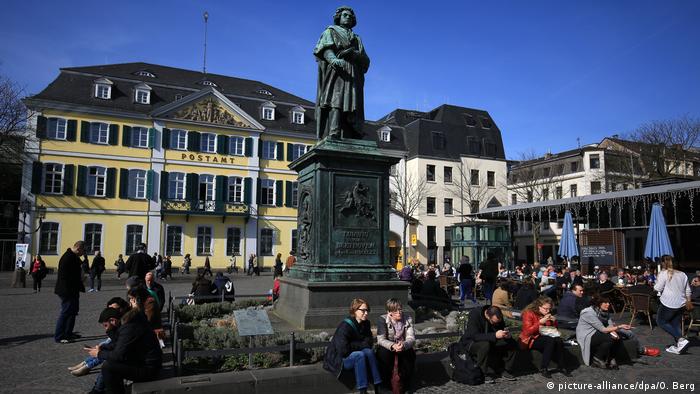MILLIONS are looking to heat up their homes for less as snow and cold weather sets in.
Snow has been blocking roads and disrupting transport throughout the past few days â which means winter has truly arrived.
Which is the cheapest way to heat your home this winter?The Met Office forecasters have issued several yellow weather warnings for snow, ice and fog across Britain for Monday, set to continue through to Thursday.
Bills are also rising now that the average household’s bill goes up to £2,500 a year.
To calculate the current typical heating cost, if you divide that by 12, that’s £208 a month â so over the six months from mid-October to mid-April would be £1,250
However, the figure is actually likely to be higher because households typically use the bulk of their energy in the winter months.
And don’t forget, by April, the cap is set to increase to £3,000.
So which way is the cheapest to heat your home up?
Do note the below costs are just estimates â how much you spend depends on the size of your home, which models you own and how often you use them.
And you might need to keep the heating on for longer if you suffer from health conditions, but there’s help you can get with costs which you can learn about here .
Keep in mind you’ll also have to buy the appliance first if you don’t have it â so do factor in those costs.
Electric blanket
Most people use electric blankets under their sheets to heat their bed before they get in it.
According to research from Uswitch, these gadgets use 100 watts of energy to warm a double bed before switching to a sleep setting or being turned off.
A 100W electric blanket run for seven hours a week would use 0.7kWh.
Based on the current cap, it costs 24p to run a 100W electric blanket for one hour a day for seven days.
If you were to use an electric blanket for one hour a day, every day of the week for a year, it would cost you £12.48 in total.
But using an electric blanket instead of turning the heating up could still save you cash off your bill, Uswitch energy expert Sarah Broomfield said.
“Using an electric blanket to warm the bed may mean you can turn the temperature of your thermostat down, as you won’t need your bedroom to be so hot.
“Turning your thermostat down by just 1°C can save you as much as £80 a year.”;;
Also, don’t forget to factor in the cost of buying the item in the first place too.
We recently did a round-up of the best heated blankets on sale now , and the cheapest was just £19.
And remember, the actual cost of energy will depend on your tariff and how long you use your appliances for.
Hot water bottle
The average hot water bottle has a capacity of 1.5 litres, or six cups, and will stay warm for hours.
But you will need energy to heat that water up in the first place.
It’s not advisable to put boiling water into a hot water bottle, as this can corrode the rubber and cause leaks.
However, you can put nearly boiling water in there â so by all means fill the kettle up, but leave it to cool slightly before transferring the liquid to your hot water bottle.
Using a hot water bottle cover or simply wrapping a towel or blanket around it will help keep the heat in for longer , and ensure it’s not too hot to touch.
To fill six cups of water, enough to fill a hot water bottle, this will cost £5.81 â this is if you just use the bottle at night â for 91 nights.
If you filled your hot water bottle once in the morning, and again at night, this will cost you £10.92 for the same period.
As far as we can tell, they’re not too expensive to buy either.
We found a hot water bottle from Asda for as little as £3.
There’s also one from Argos which costs £4.25.
Electric heater
An electric heater is a plug-in device that works as electricity is passed through a resistor and converted into heat.
The portable appliances are usually cheap and seem like an obvious solution to staying warm.
Because you can apply the heat directly at you and warm up just the room you’re using, you’d think it would be a cheaper alternative to turning on the heating.
But actually, these types of heaters actually use a lot more energy than you think.
According to price comparison site Uswitch, a plug-in electric heater uses around three kilowatt hours of energy (kWh).
The current price cap sets a limit of 34p per kWh.
So if you were looking at the maximum you could be charged to use an electric heater, you would multiply 34p by three, because that’s the number of kWh it uses.
This means per hour it would cost you £1.02 to run.
If you leave it on for an evening while you’re watching TV for, say, four hours, it will cost £4.08.
That’s £28.56 a week and a whopping £114.24 a month.
That’s more than it would have been with the previous price cap, when average energy prices were 28p per kWh.
Of course, this is the maximum you would pay per kilowatt of energy, and you’re unlikely to use an electric heater all throughout the year.
Just because electric heaters might cost you less, there are still risks to consider when using them.
Because the hot bars on electric heaters are exposed, they could easily spark a fire if they come into contact with household items .
These include keeping it well away from flammable objects like paper, furniture or curtains, and never using it to dry your clothes.
See a full list of risks to keep in mind here.
In terms of purchasing costs, we found one from Screwfix for £19.99.
Argos sells one for £32 and Amazon has one for £11.59 â so do browse around.
Log burner
A log burner seems like an obvious alternative to turning the heating, and it’s much cosier too.
The Stove Industry Alliance (SIA) estimates that a wood burning stove uses about five logs to heat, compared to a open fire which uses 16.
This saving will further increase as fuel prices continue to rise, it adds.
Of course, it’s worth pointing out that a log burner won’t heat your entire home so it can’t be considered a direct comparison.
A log burner will, however, soon heat up the room it sits in and residual heat will spread to other rooms too.
When working out costings, you need to look at the price of wood.
According to the SIA, the cost of burning kiln dried logs is between £150 to £190 per cubic meter (loose fill).
The average modern wood burning stove will use around 3.5 cubic metres (m3) of logs in a typical heating season if you have the burner on at evenings and weekends.
Therefore, based on annual wood log usage of between 3-4 cubic meters, the total cost would be approximately £600 to £700 a year.
They are a bit pricier to buy as well.
Dunelm sells one for £80, but there’s also one on the Amazon website that costs £22.99.
Make sure you check the size as well when you buy â if it’s cheaper, it might be because it’s a mini one.
More energy bill help
Struggling families are eligible for the Warm House Discount to help them tackle the cost of living .
The scheme is where eligible households can get £150 off their electricity bill each winter â but you’ll have to wait until the colder months to get the money off.
Households in England and Wales don’t need to apply to get the cash and they’ll automatically qualify if they are receiving certain benefits.
You can read more about who’s eligible here.
There are plenty of energy grants and schemes open to help you out if you’re struggling.
British Gas has recently confirmed that it’ll pay its most vulnerable customers grants worth £750 to help with sky-high bills .
Ask your supplier what’s on offer and how to apply, or check here:
- British Gas Energy Trust
- Bulb energy fund
- EDF’s energy customer support fund
- E.on’s energy fund
- Npower’s energy fund
- Ovo’s debt and energy assistance
- Scottish Power’s hardship fund
Pensioners will also be getting a £300 one-off payment .
The current “ Pensioner Cost of Living payment”;; is being handed out to millions on a low income.
You qualify under the current rules if you normally get the Winter Fuel Payment , but this could change under the new rules.
The £300 cost of living payment is paid on top of the other winter support.
You’ll need to be:
- born on or before 25 September 1956
- have lived in the UK for at least one day during the week of 19 to 25 September 2022 in what is known as the “qualifying week”;;
And the cold weather payment is worth £25 and is being dished out into bank accounts right now.
The payment is made automatically, including to those on Universal Credit .
The cash is paid to those who are in locations where there is continuous below-zero weather.
Households can get £25 during each seven-day period of low temperatures from now until March 31.




